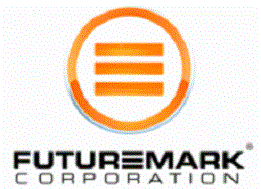
Every once in a while in the computer enthusiast community someone comes up with an idea to make something, based on a product already available on the market, and turns it into something even better. There are hundreds of articles all over the internet where people have taken a retail product and modified it to meet their own needs. Depending on the skill level of the person doing the modifications, more times than not the results are quite impressive. Enter Ivan Liang (Navig) and his Very Low Cost Tech Station. Spawned from his original DIY Tech Station, and with an eye towards affordability, Ivan has produced the “Very Low Cost” version.
First of all, thanks to Ivan for providing this unit for review and the subsequent need for a replacement part, more on that later. So, lets have a look at this “Very Low Cost” version and see how well it stacks up against others on the market.
Specifications
The first thing you need to know is that Ivan will build these to any specification the customer wants. This particular unit was the base system with a few extra additions. The choices are only limited by one’s imagination and wants. Below are the specs of the unit received for review:
| Material: | Wood (MDF) | Front Panel #1: | 2X Firewire, 4X USB, 2X FP Audio, 2X FP MIC | |
| PSU: | Standard ATX | Front Panel #2: | Power Button, Reset Button, HDD LED, PWR LED, Clear CMOS Switch | |
| Hard Drives: | Up to 5 Max | MB Form Factor: | ATX, MATX | |
| 5.25 Bays: | Up to 3 Max | Watercooling: | Radiator Mounting Brackets | |
| 3.5 Bays: | Up to 3 Max | Cable Management: | Three Slots Cut in Top Shelf | |
| PCI Exp: | 7 Slots | 120mm Fans: | 1X 120mm Under Top Shelf |
**Note – the additional 3.5 drive rack can be used to house additional hard drives, Floppy Drives, or any 3.5 device.
Here are the dimensions of the unit as shipped:
- Top Deck – 15″ X 19″
- Bottom Deck – 15″ X 19″
- Top/Bottom Height Assembled – 9-3/4″
- Rear Panel Height – 15-3/8″
Packaging
The unit arrived well taped via UPS in a large box. The box seemed to have made the journey in good condition. The unit arrived completely assembled, ready for a basic build. The watercooling brackets and additional 5.25 drive brackets will need to be installed by the user as they add components. Special care was taken to cut shipping blocks and attach them to the unit in the hopes of minimizing potential damage to the Tech Station during shipment. As you can see by the last picture below, even the shipping blocks were not able to keep the unit from being damaged by the gorillas that work for UPS. This is by no means the fault of Ivan as the unit was actually packaged very nicely and precautions were taken by him (shipping blocks) to prevent this from happening. Ivan was extremely quick to send a replacement rear panel, which installed easily. If you’re a pretty handy sort of person, perhaps asking for the unit to be disassembled before shipping might be an option to explore. Below are the pictures of the packaged unit as it was unboxed:
 |
 |
 |
 |
Pricing
This particular unit, as ordered, sells for $160 USD, Here is the cost breakdown:
Base Unit: $100
CMOS Clear Switch $10
Extra 3.5 Drive Bay Stack $10
Extra Front Panel Bracket $10
2X Front Panel Units (Firewire, USB, Audio, MIC) $30
Total = $160
As stated before. these units are totally customizable. Get with Ivan for pricing on a unit that fits your needs. Just let him know what you want and he will design it for you and provide pricing. It doesn’t get much easier than that! You can contact Ivan at [email protected]
A Closer Look
Now that the “Very Low Cost Tech Station” is unpacked and the replacement back panel is on the way, some glue was applied to the broken piece to allow the review to continue. So, let’s have a look at what this Tech Station has to offer!
Below is a group of pictures taken from various angles. The first picture is of the front panel area. Here you will see the dual front panels consisting of Firewire, 2X USB, Front Panel Audio, and MIC connections. A look at the top deck shows three slots cut out to allow cables from the bottom deck to be easily brought to the top and thus connected to the motherboard. The size and length of these slots are more than adequate for routing a large amount of cables. Also, you can see the motherboard stands, which are rubber and have a threaded screw in the middle.
The second picture is a left side view. The drive rack toward the rear is intended for mounting up to five 3.5 hard drives. The drive rack toward the front is intended for mounting floppy drives, card readers, or any other 3.5 device. You can also see the “T” and “L” brackets used to attach the back panel to the upper and lower decks. Another great feature is that the rear panel has been notched at the two places where the upper and lower decks join with it. The upper and lower deck actually “Slide” into this notch and then it is screwed in to place. This method makes for an extremely stable unit, if feels very solid when working with it.
The third picture is of the back of the Tech Station. The two vertical bars are used to secure the power supply unit in place. This design only allows three screws to be used to attach the PSU. This is because of the one offset hole all power supplies have. With the three screws attached, the power supply feels very solid in its place. You will also notice the four hefty screws (two at each deck height) that attach the back panel to the upper and lower decks. In combination with the notch method, these large screws really make for a solid feel to this Tech Station. You will also notice where a 120mm fan hole has been cut in to the top deck. The fan will direct air to the underside of the motherboard, and more precisely the CPU area, another great feature for all of you overclockers out there!
Continuing our tour around the Very Low Cost Tech Station, the fourth picture is of the right side of the unit. On the bottom front you will see two thin brackets, this is where your 5.25 drives are attached. If you attach more than one 5.25 drive, brackets are included to join them and hold them solidly in place. A very simple but effective flat bracket is used for this. The block of wood you see attached to the bottom right is simply a platform for the power supply to rest on. It is needed to bring the bottom of the power supply level with the bottom edge of the rear panel thus allowing the power supply mounting brackets to do their job.
The fifth picture is a quick shot of the bags of hardware included. In these bags you will find the additional 5.25 drive brackets, the watercooling radiator brackets, a host of drive screws and nuts and bolts for attaching your watercooling radiator.
 |
 |
 |
 |
 |
|
Let’s have an even closer look at a couple areas of this Tech Station. Here are a couple of close shots of the two front panels. It’s worth looking at these just to get a feel for the craftsmanship that go into them. The face plates are hand made to fit the components attached to them. It is hard to tell these from factory manufactured items. Not only do they look good, but they are of great quality and work fantastic! The power and reset buttons are large and all metal, almost industrial feeling. The hard drive activity LED and power light LED are good size and are just the right brightness. The clear CMOS switch is the one manufactured by Silverstone, and is solidly attached to the face plate as well. The dual Front Panel that houses the Firewire, USB, Audio, and MIC connections is also of great quality and securely attached to the face plate. Plugging devices into the USB, Firewire, Audio, and MIC ports feels very solid. All and all these front panels are just superb and of excellent quality.
 |
 |
Now let’s have a closer look at the bracket used to secure your PCI and PCI-e cards. Its a simple “L” bracket attached with two screws. The appropriate holes have been drilled and threaded. Light weight aluminum thumb screws are provided to secure the cards. This system works very well and securing your cards is a snap to do. The first picture below gives you a good idea of how this bracket works.
Like every good artist, a signature on your creation is a necessity. Ivan put a very discrete signature on the front, left corner of the top and bottom shelf. You almost have to know it is there to notice it. The second picture below gives you a view of this signature.
 |
 |
Now that we have taken an extensive tour of the Low Cost Tech Station, lets explore how a system actually gets installed on it. As you can imagine there is a lot of room to work when everything is wide open and easily accessible. If you change hardware quite often, you will really enjoy how quickly components can be swapped around. If you’re part of the extreme overclocking crowd and use CPU pots and the like, then using a Tech Station is the only way to go.
Here is a list of the components used to assemble the system:
- Biostar TPower I45 Motherboard
- Intel E8400 CPU
- Thermalright HR-01 Plus CPU Cooler
- G.Skill 2X2gb DDR2 1066 Memory
- Visiontek HD3870 PCI-e X16 Video (Two in Crossfire)
- PCP&C 750 Quad Power Supply
- Western Digital 500gb SATA II HDD
- Western Digital 160gb SATA II HDD
- LG SATA DVD Rom Drive
- Generic USB Card Reader
The motherboard was assembled with the CPU, Heatsink, Memory, and a single video card for now. As the board was lowered on to the top shelf the standoffs were found to be in the perfect location, the motherboard dropped right into place. Once the board was lowered on to the top shelf, the provided brass thumb screws were used to secure the motherboard. The video card was then secured to the bracket using the provided aluminum thumb screws. Below are some pictures of the motherboard mounted to the top shelf.
 |
 |
 |
 |
Next, the components that will reside on the lower deck were installed. The hard drive rack is the standard Lian-Li five drive housing. You simply remove two thumb screws that secure the bay, slide it out and install your hard drives. Two Western Digital hard drives were installed leaving enough room to tuck unused PSU leads and other cables in the bay.
Continuing the build, the PSU was mounted and secured to the PSU mounting brackets. Again, it will only be possible to use three screws to mount the PSU, which is more than enough to keep it secure in its place.
Now the DVD Rom drive and the card reader need installed. Again, this is a painless operation, just slide the components in place and secure with the provided screws.
Finally the cable leads were brought to the top deck through the cable management holes and attached to the motherboard. The location of these cable management holes allow you to bring cables to the motherboard from almost any conceivable angle. This is by far one of the nicest features of this Tech Station. Below are some pictures of the assembled lower deck of the Tech Station.
 |
 |
 |
 |
As previously mentioned, the Tech Station arrived with a damaged rear panel. As promised Ivan sent along a replacement panel quickly. The excellent craftsmanship continued as this replacement panel fit perfectly. All that needed to be done was drill a few holes for the brackets and screws and the job was done. This is the kind of customer support the big boys could learn from!! Here are a couple pictures of the replacement panel and after it was installed.
 |
 |
And finally a few shots of the completed build. A nice setup with a fresh install of Ubuntu 9.10!
 |
 |
 |
Final Thoughts and Conclusion
With out a doubt the “Navig’s Low Cost Tech Station” will rival any product on the market costing substantially more. The unit is sturdy and very well layed out. These Tech Stations are rather large and provide a good amount of room to work with, both on top and on bottom. Hats off to Ivan for making his ideas come to fruition. If you are looking for a Tech Station that is “Low Cost” but has the look and feel of a much more expensive one, this is the ticket.
Usually a pros and cons section would be placed here, but, given the fact the only real con was the piece that was broken on arrival, it is not necessary. The only suggestion would be to perhaps draw up a good set of assembly instructions and ship the unit disassembled. Other than that, the pros are listed throughout this review and there are lots of them!
Here at Overclockers Tech we use an award system to rate reviewed products based on a 1 to 10 rating. A rating under 5/10 does not qualify for an award, a rating between 5-6/10 earns a Bronze Award, a rating between 7-8/10 receives a Silver Award, and our top honor the Gold Award is given to products that receive a rating between 9-10/10. In order to achieve a gold award a product must exceed expectations, be a terrific value for the money, have great customer support, and be a leader in its class. Without any reservation, we give “Navig’s Very Low Cost Tech Station” the gold award based on a well deserved 9.5/10 rating.

9.5/10
![]()





 Posted in
Posted in 

